Merida, Yucatan: Hammocks, Cenotes & Mayans
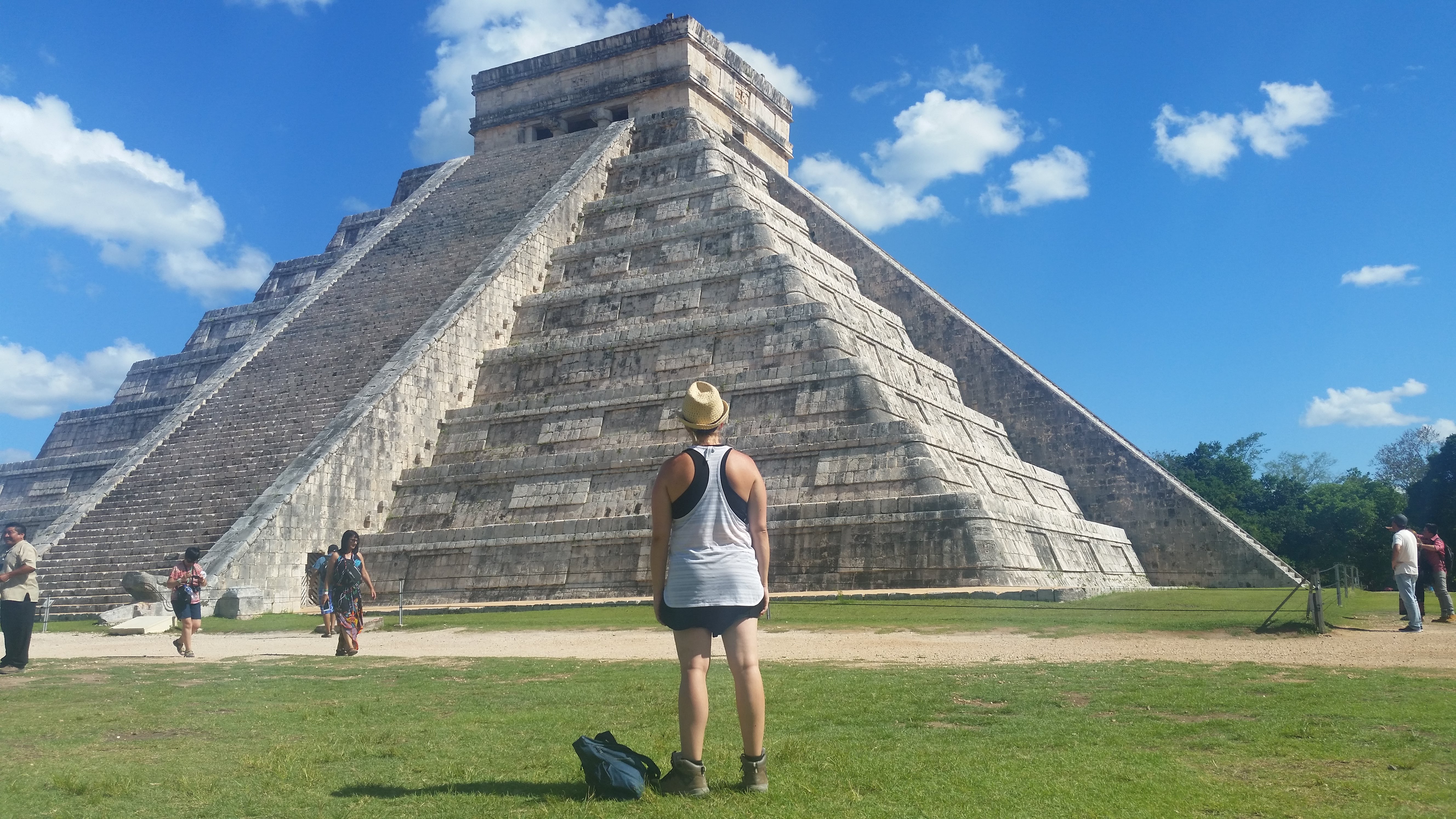
Three weeks ago, I arrived in Merida at the north of Mexico’s Yucatan Peninsula. After a week of partying, sunburn and utter heat exhaustion, I was ready to take some of my own advice that I gave in my previous article about taking it easy.
I spent the entire next day after checking in watching Friends in my hammock over the pool, without saying a single word to anyone.
**Merida travel tip**
Book a hotel or hostel with a pool – it was literally the best decision I have made so far on this trip. In Yucatan, the heat in May can rise up to 40 degrees so keeping cool in a shady pool during the middle of the day or cooling off after an exhausting hot day trip is something that your aching, sweaty body will thank you for.
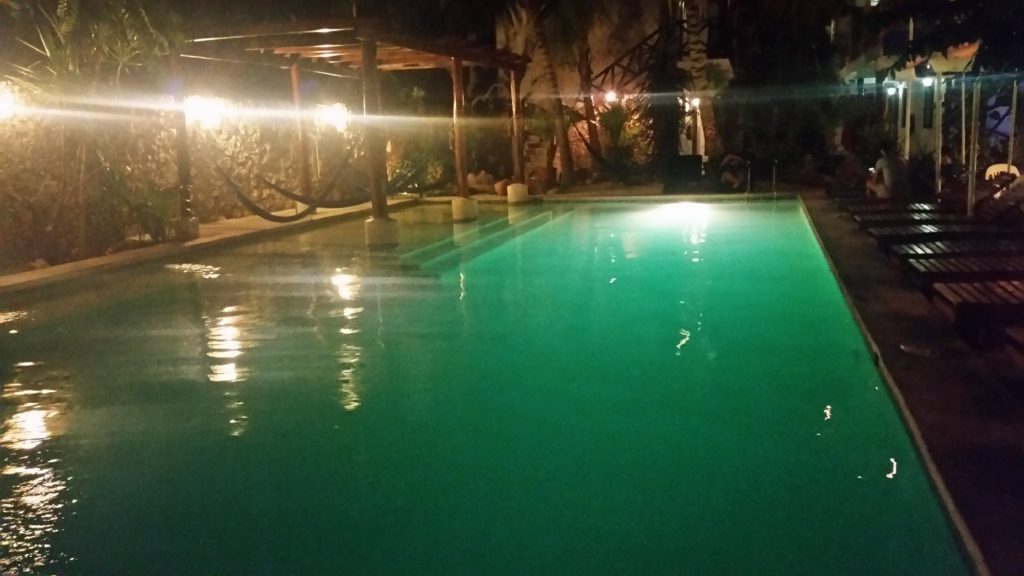
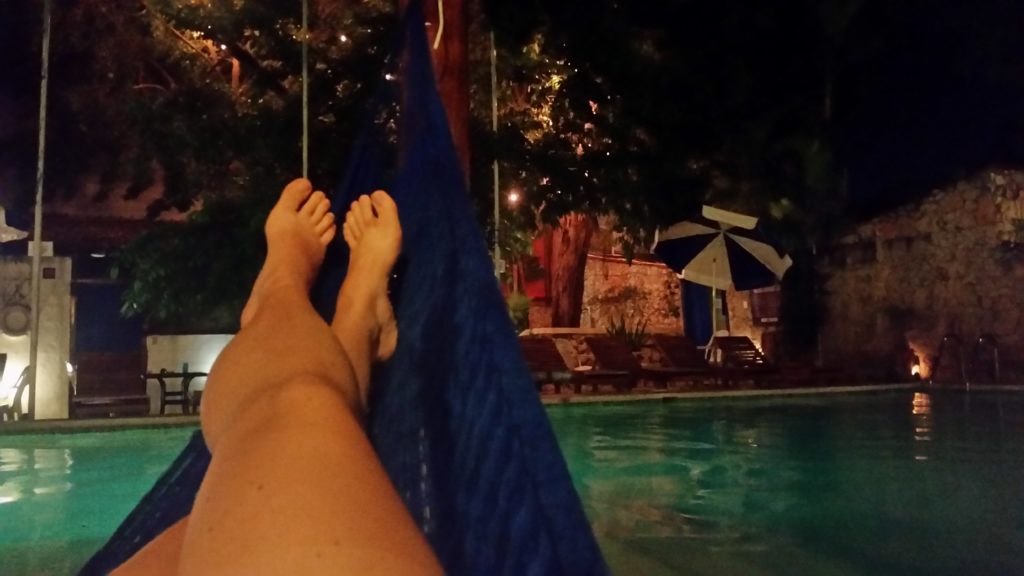
For hostels, I recommend Nomadas Hostel – not only do they have hammocks literally OVER the pool, but they have nightly salsa and Mexican cooking classes, plus great day trip and bus information, making it very easy for solo travellers to explore Yucatan on their own.
Also, don’t leave Merida without eating at restaurant Chaya Maya – there are two within the historic centre, and they serve amazing traditional dishes from the Yucatan region. You have to try the Queso Relleno, a ricotta cheese block hollowed out, stuffed with meat and served with the most amazing creamy white sauce…mouth watering!
As the capital of the Mexican state of Yucatan, the centre of Merida is a beautiful town on its own, but its real appeal is the fact that it’s a springboard to loads of historical and archaeological Mayan and Toltec heritage sites, plus the incredible cenotes,
Cenotes de Santa Barbara
Cenotes are limestone sinkholes of freshwater so blue and clear that with light, you can see straight to the bottom for tens of metres. At these hidden locations, you can swim in crisp mineral-rich waters in magical caves and feel lost in another time. We visited the cenotes of Santa Barbara: Poolcocom, Cascabel, Chacksikin, and the mayan town of Acanceh, where a Mayan pyramid stood proudly right in the middle of the town. Welcome to Merida!
Jumping into those never ending cool-crisp waters and awing at the limestone structures was the perfect way to spend a warm Yucatan day. On the tour I met a German girl who had lived in Mexico for eight years and was back to visit and show her Mum the country that she had fallen in love with. I will never forget the bird that shat on her shoulder as she lay back in her lifejacket in the middle of the cenote. From that moment on we kept our eyes pointed downwards and our mouths firmly closed!
We spent the afternoon lazing in the hostel pool until I was cool enough to brave the heat in the evening’s salsa class. We even had time for a touch of bachata (my favourite) at the end and it felt great to dance again, reminding me of my desire to go to Colombia and take some lessons. Despite being absolutely dripping with sweat, all of us had so much fun that we all went for drinks at a local cuba bar after the class, drinking buckets of beers, shots and platters of nachos and paying about $12 each.
Progreso Beach
I rose late the next morning, too late for any day trips. I took a bus up to the coastal beachside town of Progreso, the closest beach to Merida. I ran the usul gauntlet of roadside vendors selling me their wares, and sat myself down at a beachside restaurant with tables right on the sand. Progeso is known for their amazing seafood restaurants and after years of not eating fish for ecologically-sustainable reasons, I had a hankering to try some of the locally-caught fish. As I sat alone, I opened myself up to the possibilities that solo travel brings you. I allowed myself to be serenaded by a guitarist walking along the beach, and when a fellow traveller struck up conversation with me, I invited him to my table. This American traveller was in fact a businessman, originally from Guatemala, and the beers we ordered turned into pina coladas and ceviche. We puffed away on his vape pen and fell into hours of THC-induced conversation about philosophy, people and travel as a storm rolled by. In my hazy, half-high state, I smiled on the bus all the way back to Merida at the cool-ass people you can randomly meet on a beach if you open your eyes and your mind.
Dzibilchaltun
The following day, I headed to the archaeological site of Dzibilchaltun, my first view of Mayan ruins. The most famous structure is called the Temple of the Seven Dolls, named after the clay figurines that were found at the site in the 50s.
At the equinox in Spring and Autumn, a few minutes after sunrise, the orientation of the building means that the sun can be seen through the east and west doors, passing through and crossing the construction. The temple is connected to the rest of the site, by a long pathway. Dzibilchaltún also contains the ruins of an open, Spanish, 16th century chapel, built on the site after the conquest and a museum, which contains many Mayan artifacts found on the site and its adjacent regions of Chiapas, Yucatan and Guatemala. After a hot day exploring, cool down in the open air cenote, but be careful of the fish, they love to nibble on feet!
Chichen Itza
The following day I farewelled Merida and headed to Chichen Itza, the crown jewel of the Maya archaeological zone.
Chichen Itza city was the most important capital city of the Maya area in the Classic period and the beginning of Post Classic. When Spaniards arrived, it was the most visited center of cult and pilgrimage of Yucatan Peninsula.
Chichen Itza holds uttermost valuable information of Pre Hispanic past. Due to its beauty and singularity, it is a cultural referent for Mexicans and a symbol of national and indigenous identity.
The most prominent structure in the centre of the site, Kukulcan Pyramid, known as El Castillo (The Castle), has become an emblem of the Maya culture all over the world.
Click on each of the images below to view full size.
Tips to visit Chichen Itza:
- Get there early, really early. It gets crowded and you never get a decent picture without hundreds of tour groups in the background.
- Or do what I did – get there late, say 3pm, and by 4pm people start to clear out as the park closes at 5pm.
- Allow yourself at least 2 hours. You don’t want to run around madly trying to take it all on before your bus leaves (as I did).
- If you are staying the night in the area, take a 2 hour break when they close the gates and come back at 7pm for a spectacular light and sound show (if that is your thing I’m a bit more traditional and plus I had a bus to catch).
- If you have the money, this is one of the places I would recommend a guided tour. THere is too much history in this magical place for you to wander around oblivious to the cultural significance of these structures (again, like I did).
- Take plenty of water. It’s hot, humid and you’ll be doing a bit of walking.
- Take some cash with you to buy some souvenirs. There are some amazing artesanal crafts for sale along the pathways of the site. The vendors are lovely and not as aggressive in the towns. Don’t be afraid to haggle a bit on prices – a bit of Spanish wouldn’t hurt.
- You can pass through Chichen-Itza on your way between Merida and other towns such as Playa del Carmen, Cancun or Tulum. You can leave your bags at the front but beware, there is a 100 peso charge ($5USD).
Other sites in Yucatan worth visiting from Merida:
Uxmal
Declared a UNESCO Heritage Site in 1996, it is only 78 km from Mérida. Its name comes from “Oxmal” which is Maya for “three times built” or “what is yet to come”. Uxmal was the greatest metropolitan and religious center in the Puuc hills in the late classical period. It thrived between the 7th and 10th centuries AD and its numerous architectural styles reflect a number of building phases.
Izamal
The first thing that any visitor notices is that the town is painted yellow… all the colonial buildings, the market, the huge convent, everything! The next things that stand out are the cobblestone streets and the iron lamp posts that give the town a tranquil ambiance.
To visit Izamal is to visit a city/town that is alive with three cultures – the ancient Maya, the colonial, and the present day bustling Izamal. Izamal is a monument of colour, history and pride that can be felt in its streets and buildings. Art, music, and gastronomy are all around.
Valladolid
Located halfway (two hours from each) between Mérida and Cancún, Valladolid, newly-named “Pueblo Mágico” in 2012, is a bustling Maya city with a special colonial flavor that maintains preserves the Spanish culture. This is where you will see the majority of the townspeople still using the typical dress of the Maya, and the buildings around the Main Plaza painted pastel colors. You will surely get a sense of the laid-back pace of life.
Celestun
Get up close to thousands of pink flamingos and other incredible wildlife species on a boat ride through the estuary of Celestun Wildlife Refuge
Campeche
Campeche is a colonial fairyland, its walled city center a tight enclave of restored pastel buildings, narrow cobblestone streets, fortified ramparts and well-preserved mansions. Leave the inner walls and you’ll find a genuine Mexican provincial capital complete with a frenetic market, peaceful malecón (boardwalk) and old fishing docks.
Holbox Island
A paradise beach destination. The streets of Holbox Island are made of white sand, common of Caribbean islands, and there are very few cars. Holbox is considered a virgin tourist destination because very few outsiders visit the island. In spite of Holbox’ natural beauty, inaccessibility has left it unspoiled by mass tourism.
I’m glad I’m settling in Playa del Carmen for a while longer, because with so much to see and do in Yucatan, I’m not done yet!

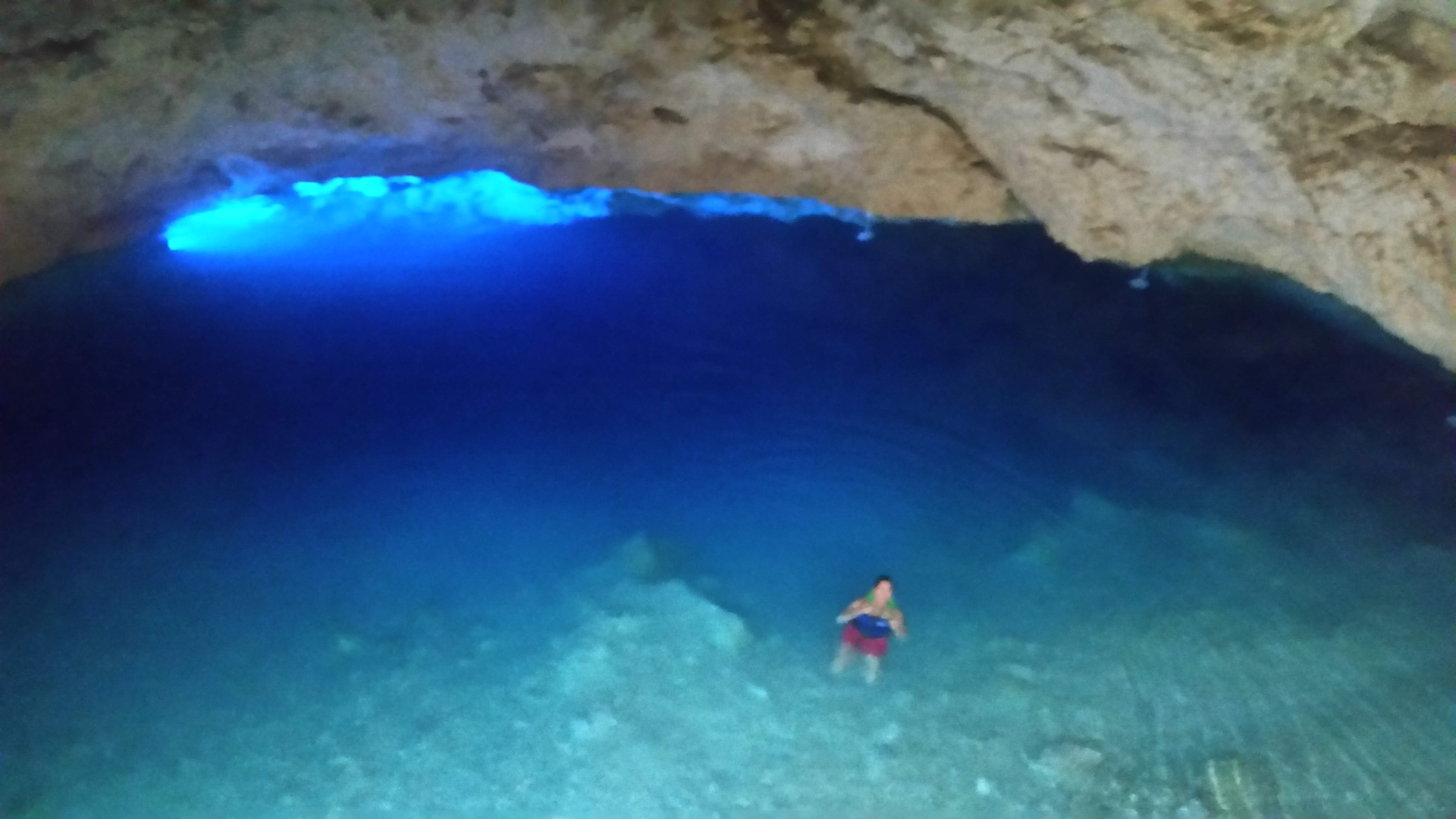
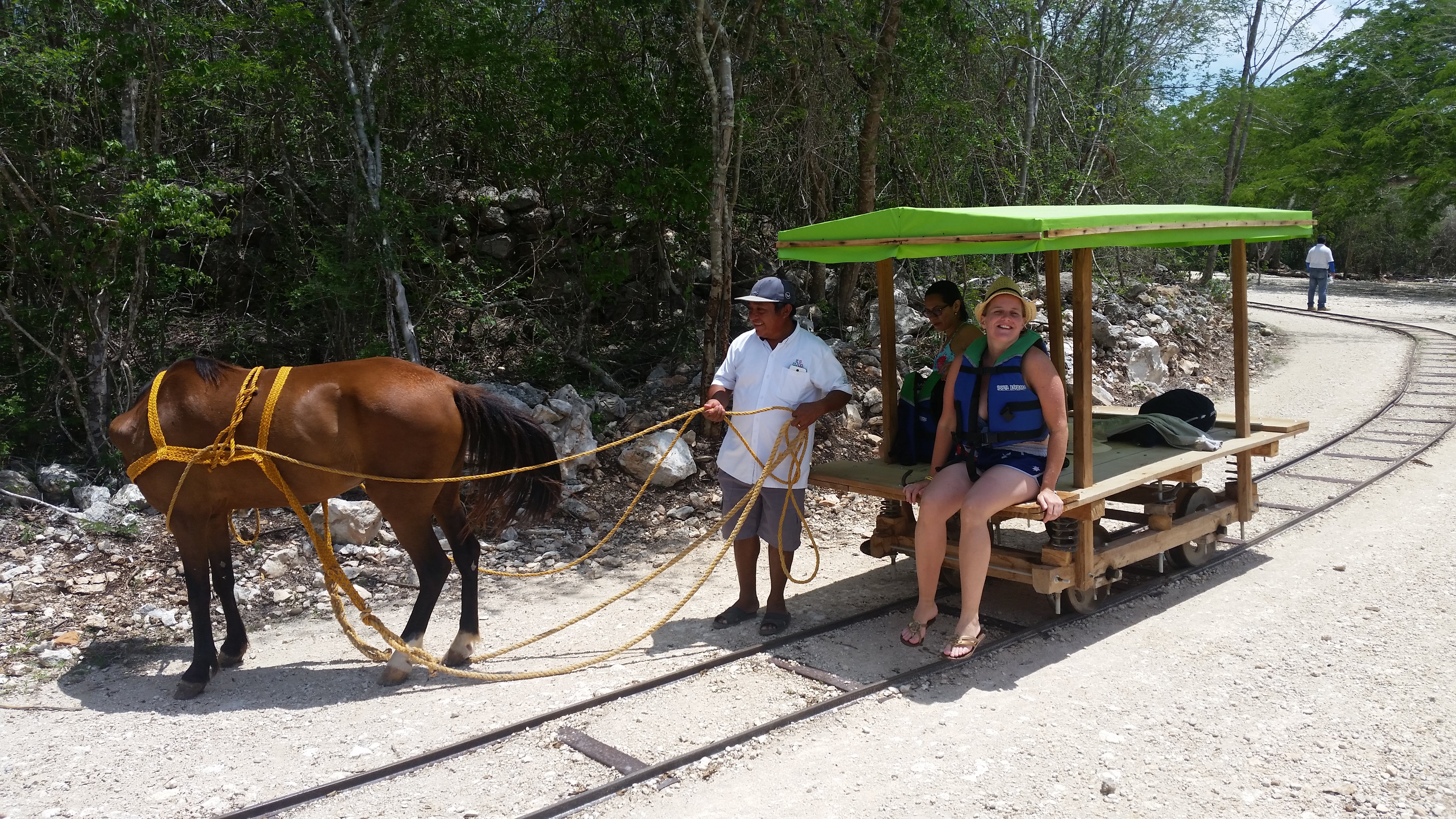
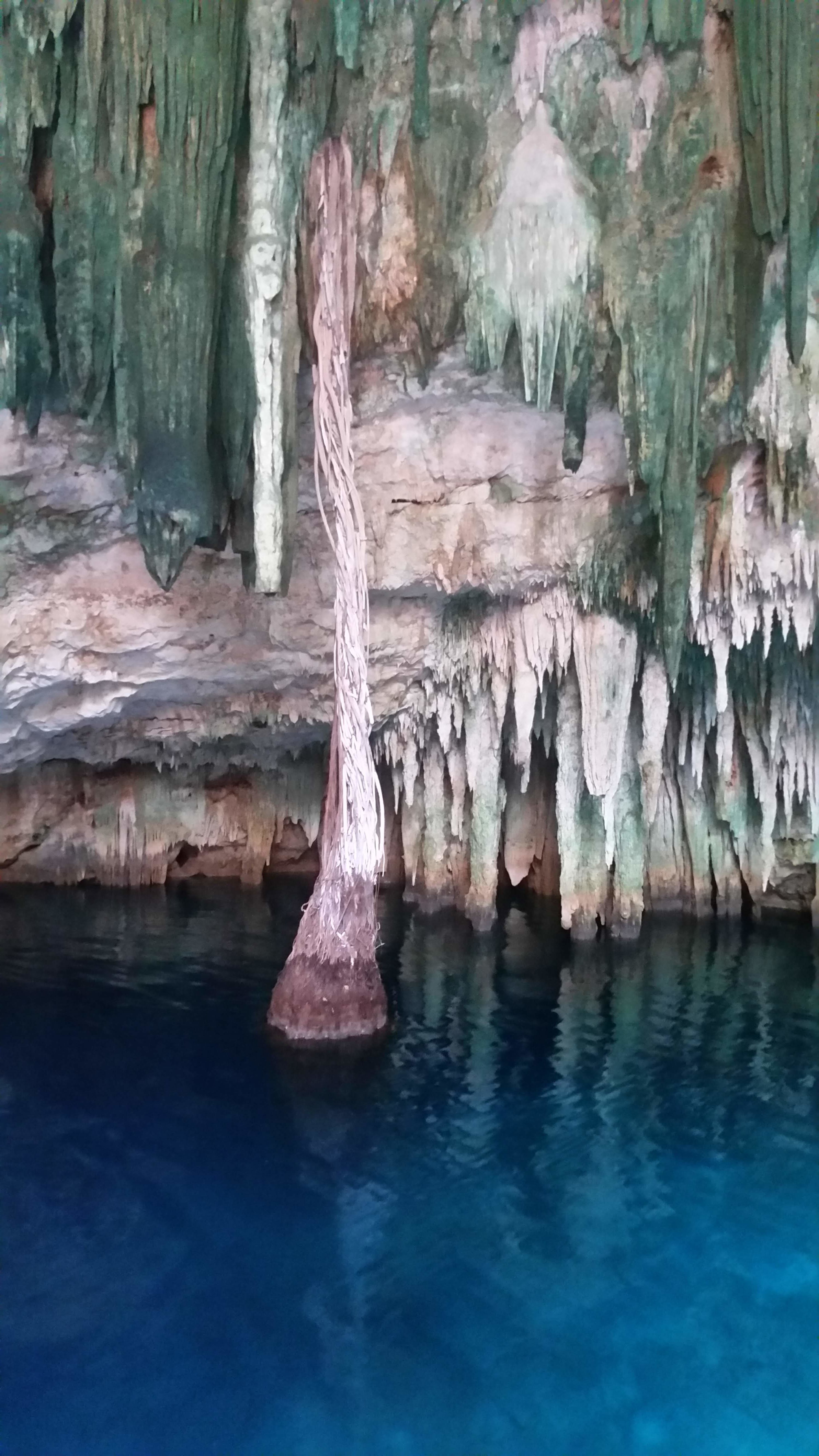
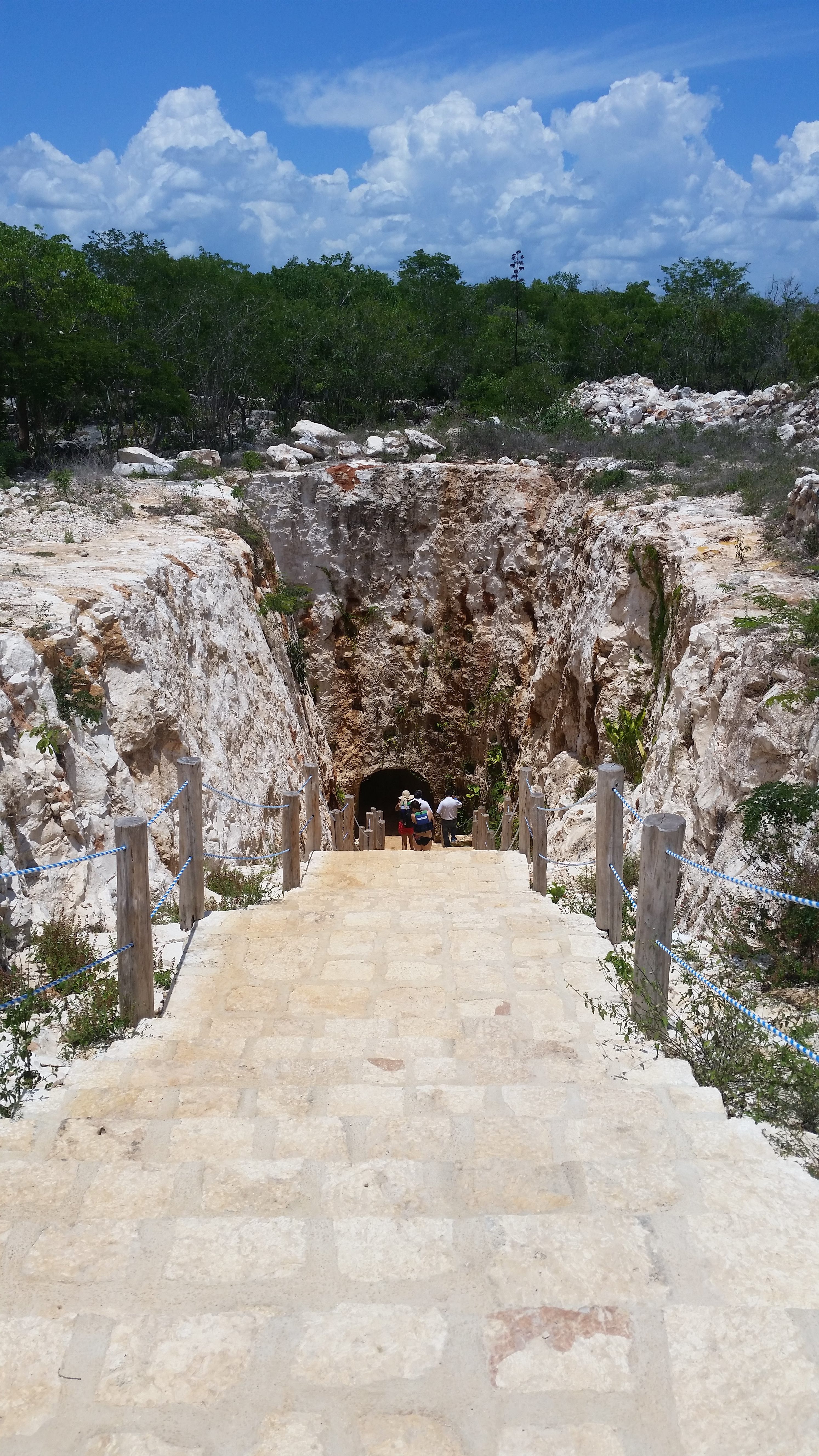
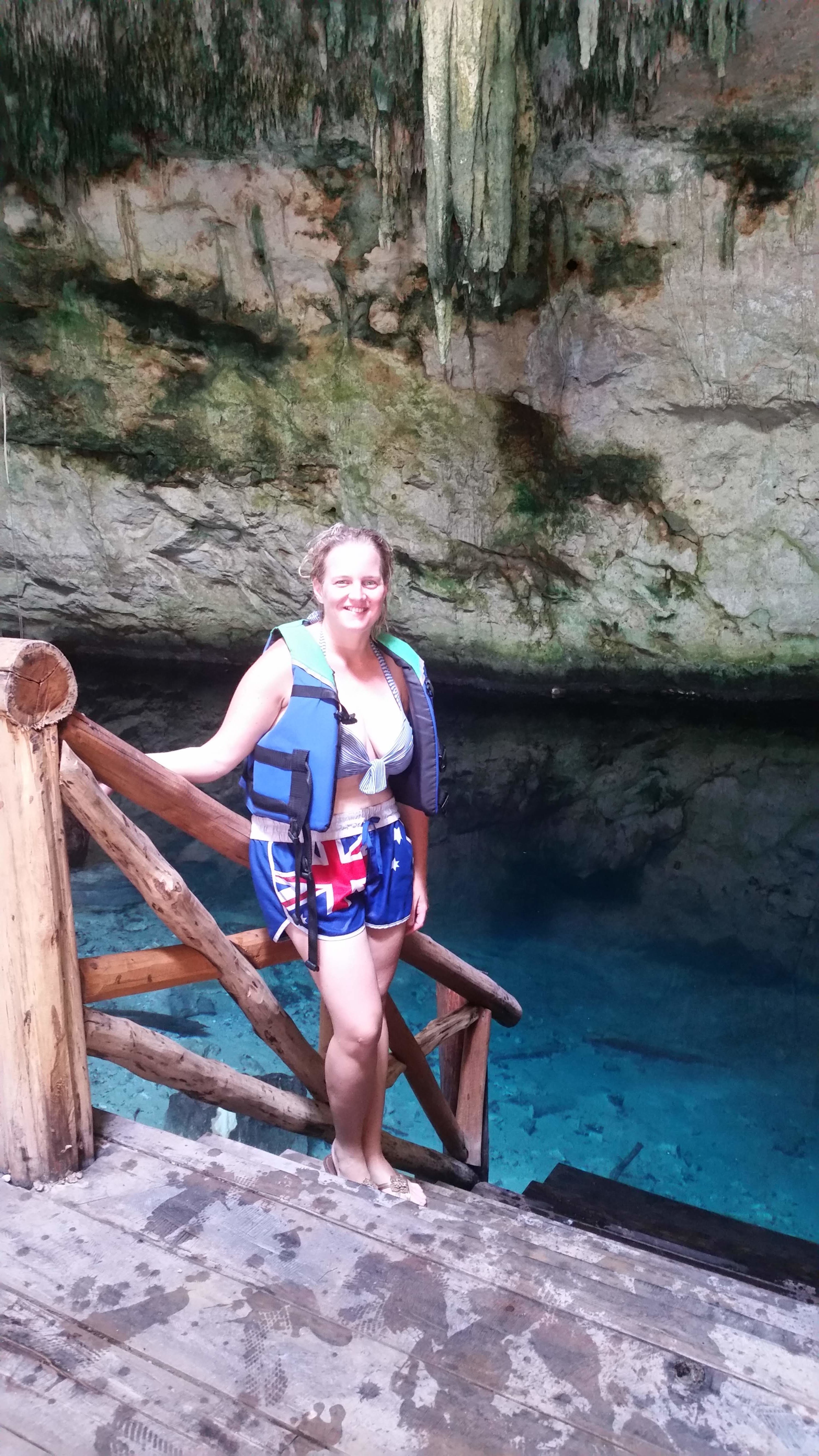
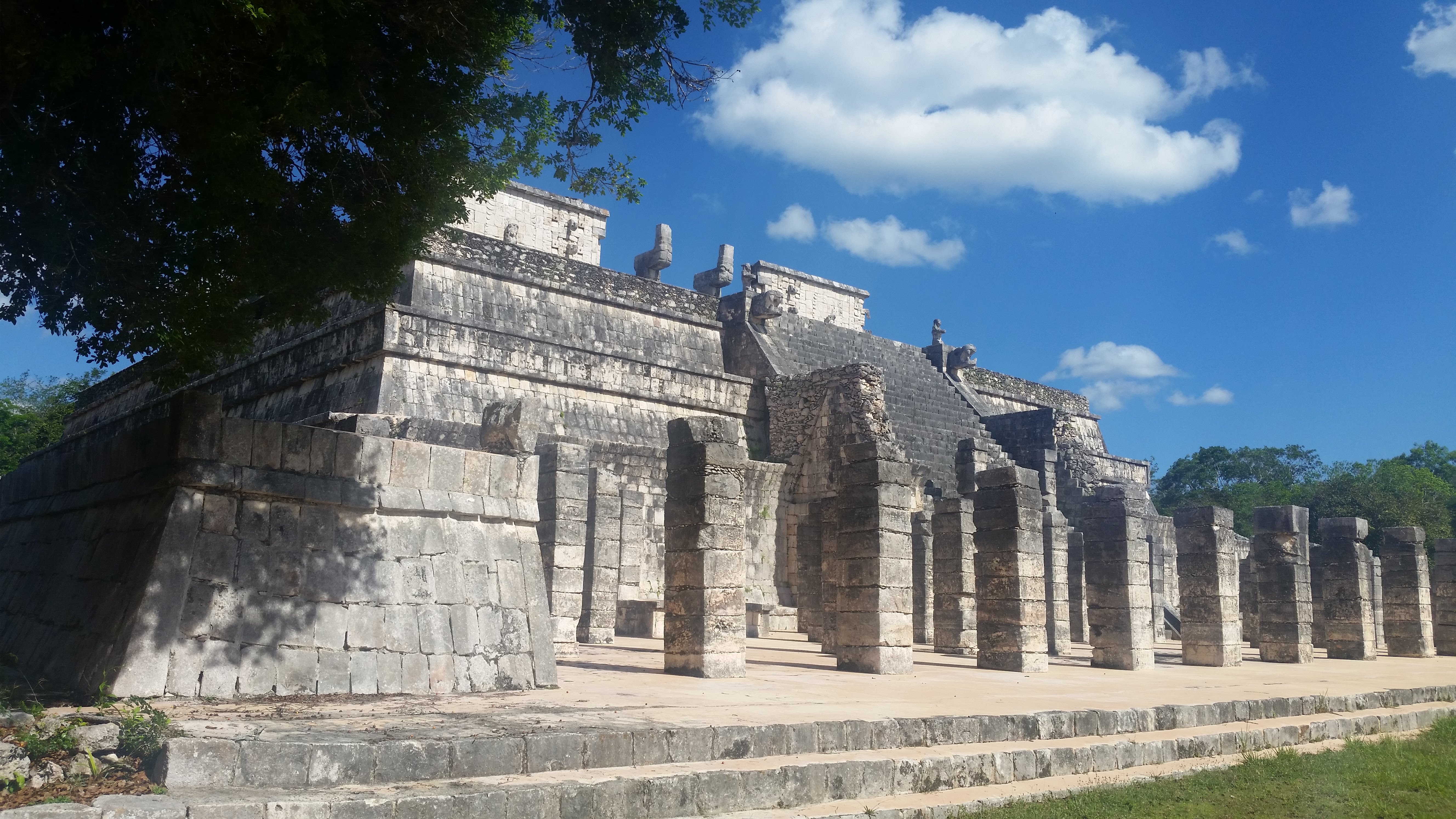
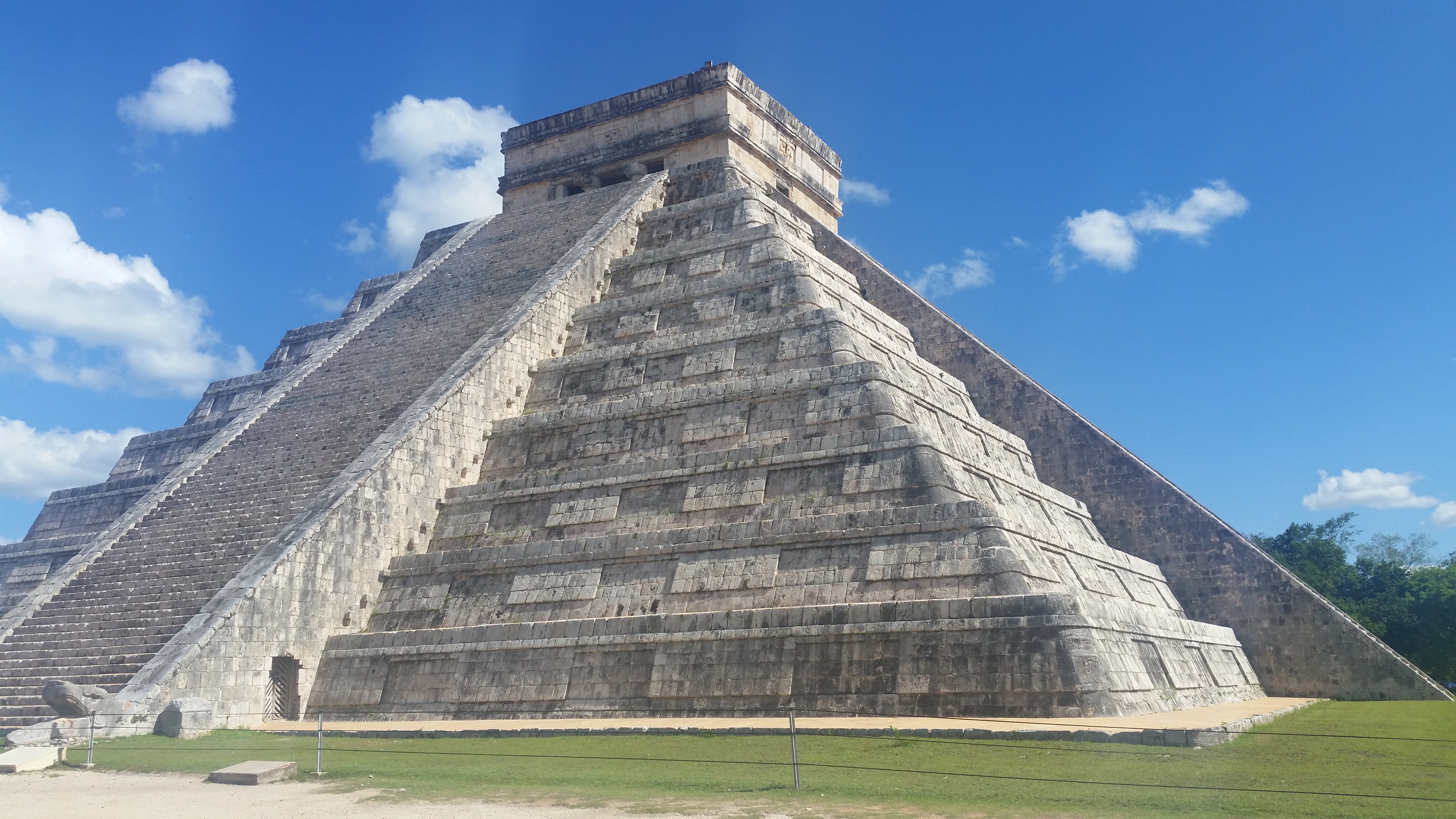
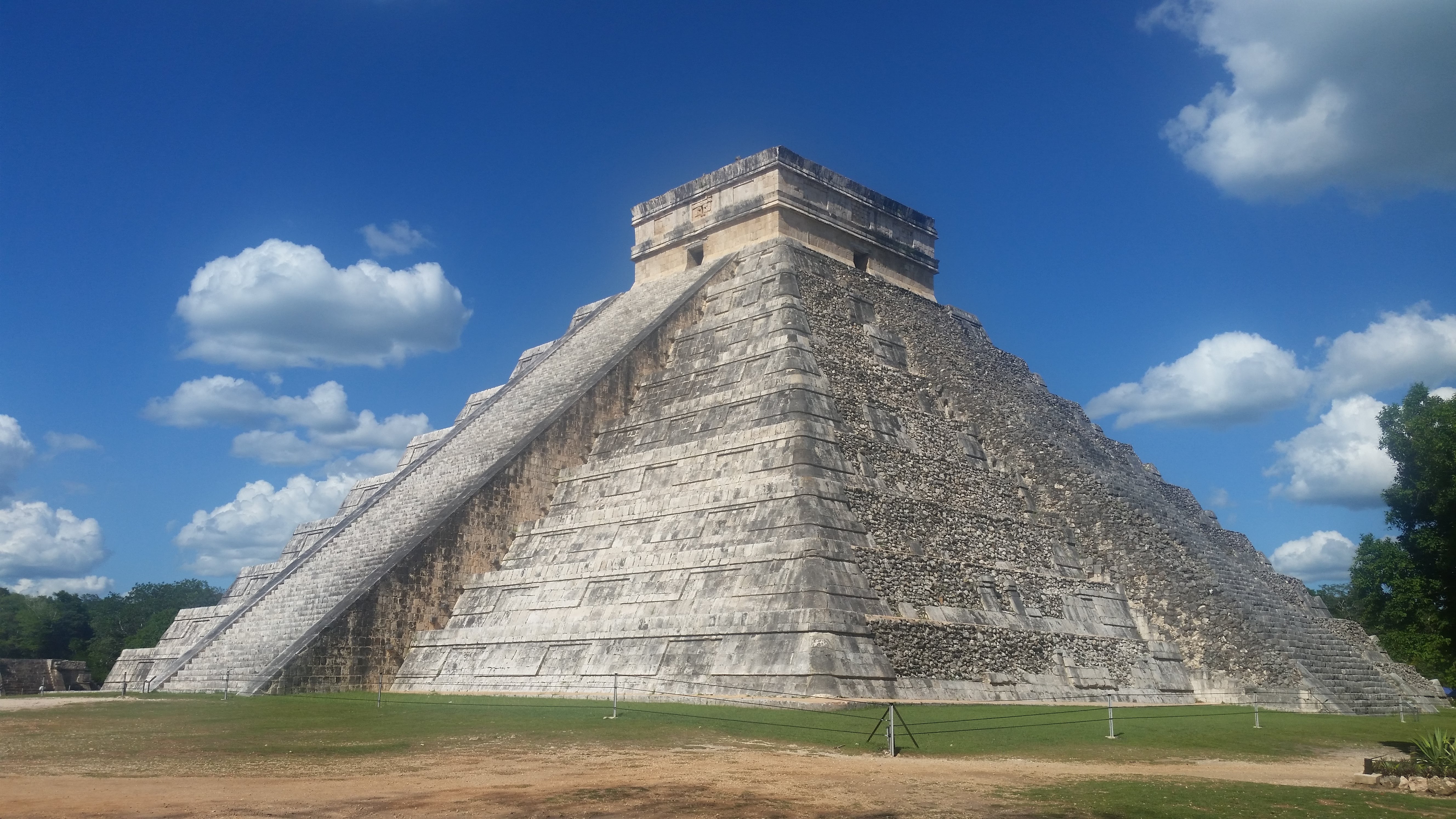
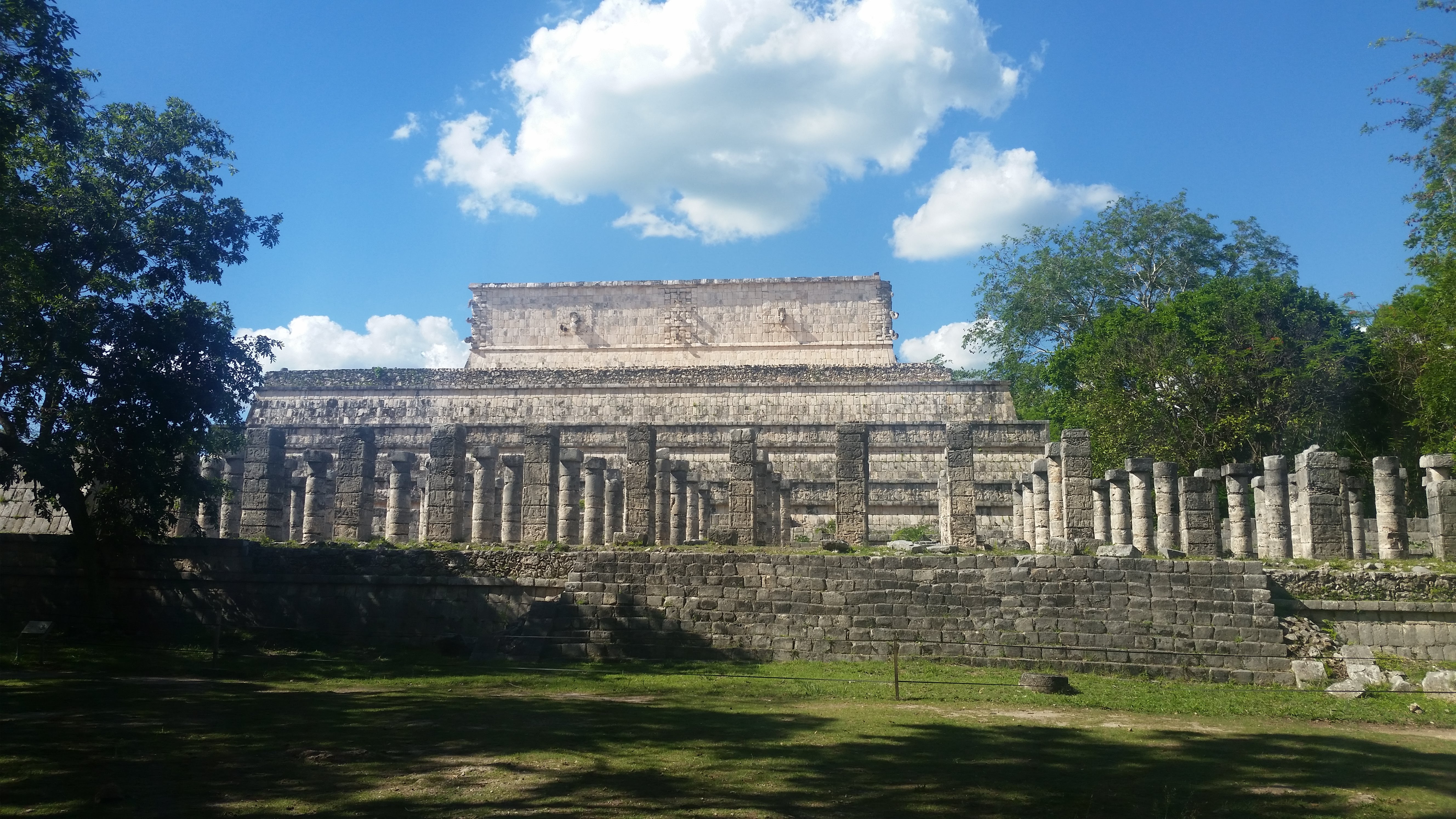
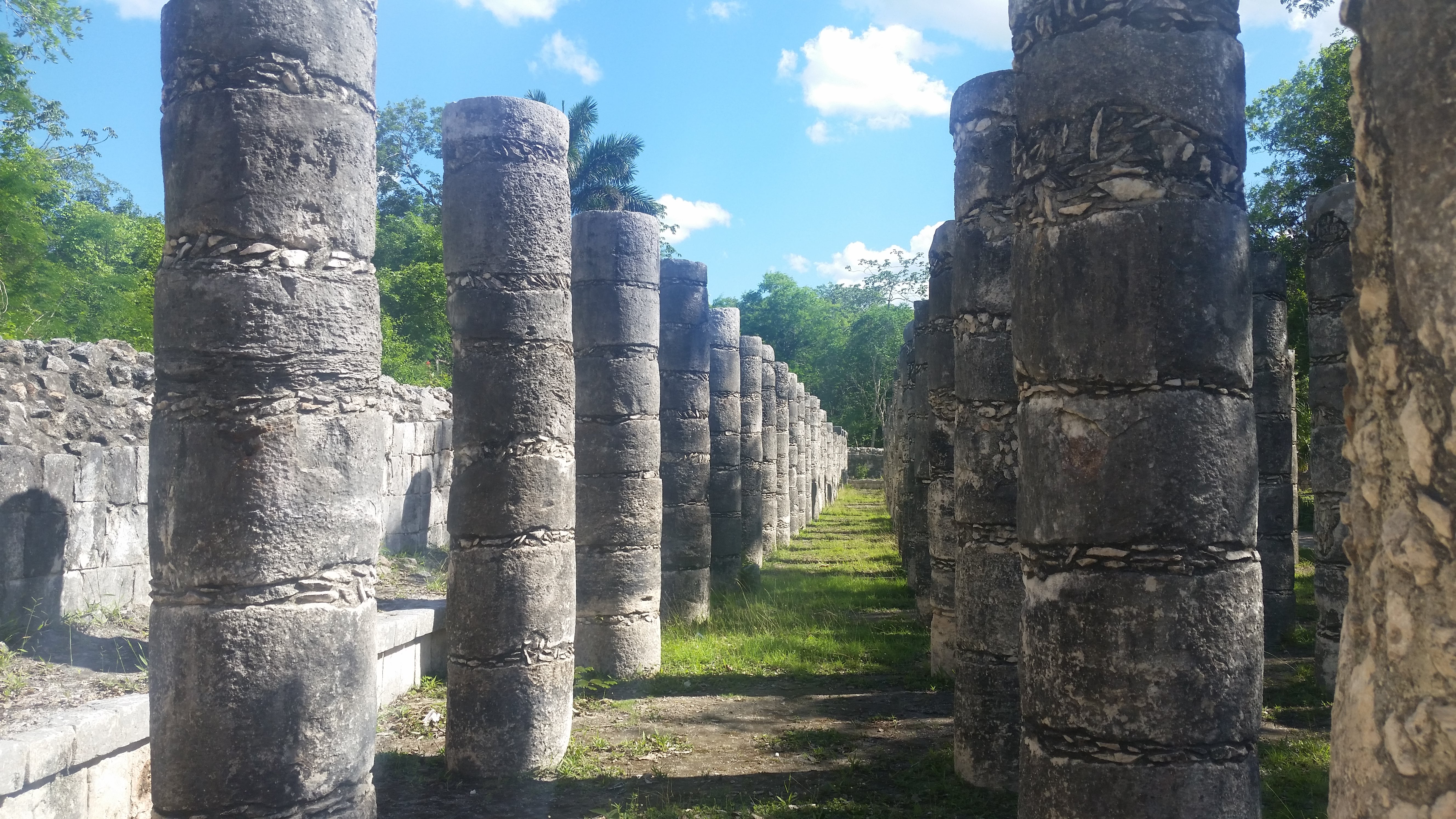
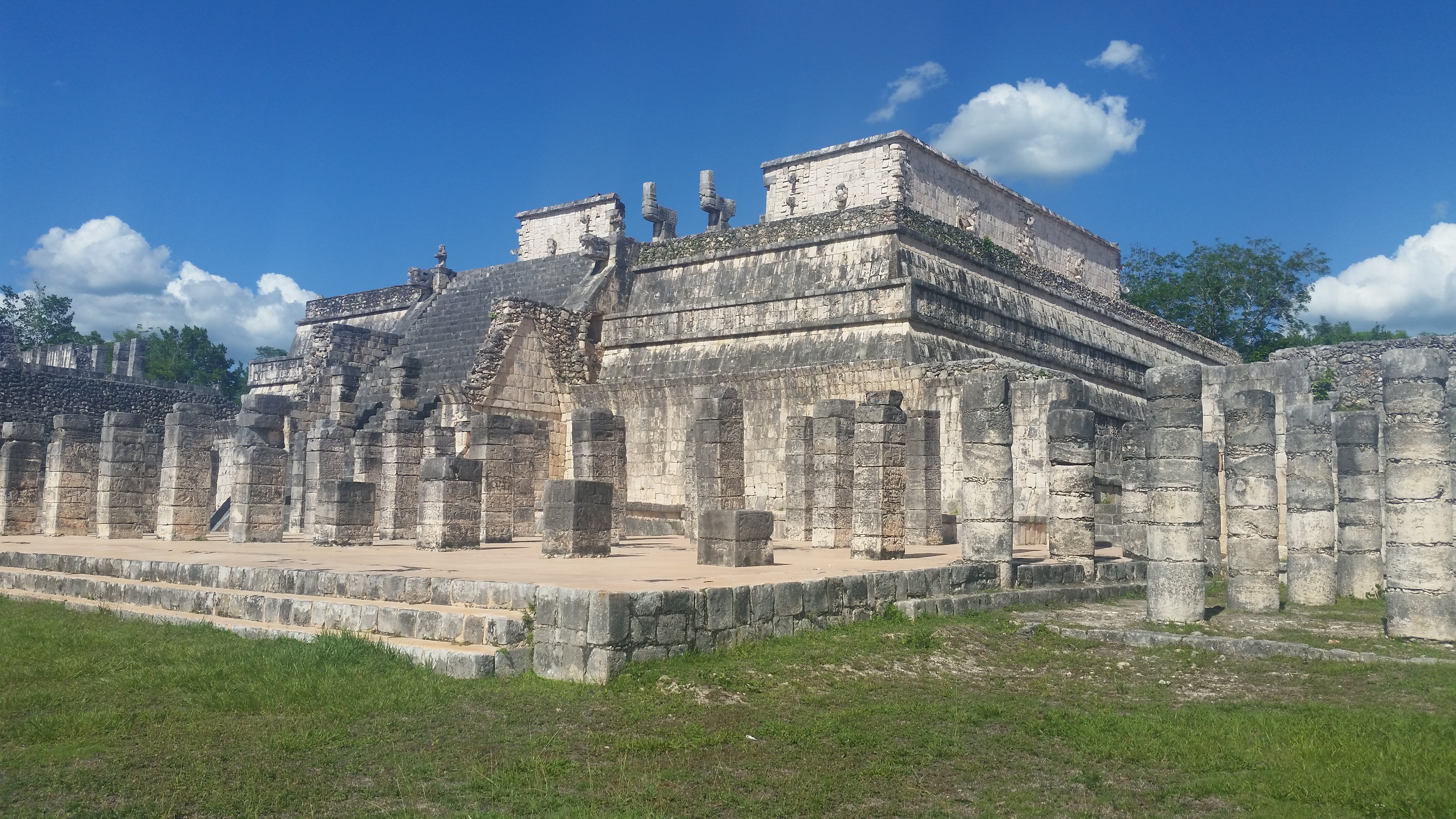
Thanks for sharing your journey .
And thank you for sharing all of yours. Your posts are super inspiring, I love the positive energy you bring to your travels! Catch up in a week in MX!